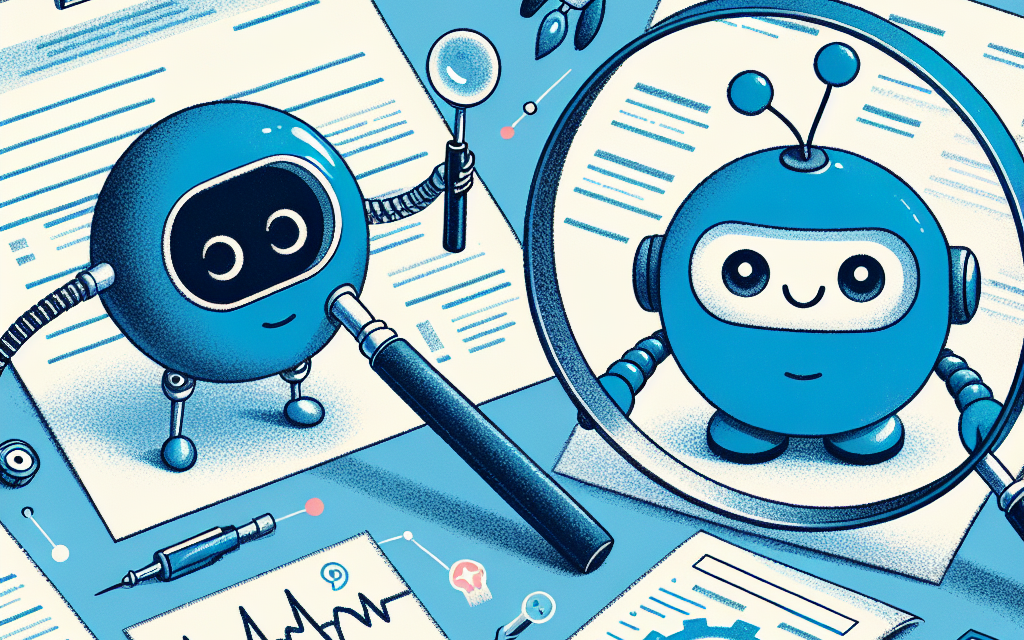Zoom and Suki Collaborate to Implement AI in Clinical Documentation

In the rapidly evolving landscape of healthcare technology, the integration of artificial intelligence (AI) into clinical documentation is a significant advancement. Zoom, a leader in video communication, and Suki, an innovative AI-powered voice assistant for healthcare, have joined forces to revolutionize how clinical documentation is managed. This collaboration aims to streamline processes, reduce administrative burdens, and enhance patient care. This article delves into the intricacies of this partnership, exploring its potential impact on the healthcare industry.
The Evolution of Clinical Documentation
Clinical documentation has long been a cornerstone of healthcare, serving as a critical tool for communication among healthcare providers and a record of patient care. Traditionally, this process has been labor-intensive, requiring significant time and effort from healthcare professionals. However, with the advent of digital technology, clinical documentation has undergone a transformation.
Initially, electronic health records (EHRs) were introduced to digitize patient information, making it more accessible and organized. While EHRs improved data management, they also introduced new challenges, such as increased documentation requirements and the risk of physician burnout. The need for more efficient solutions became apparent, paving the way for AI-driven innovations.
AI in clinical documentation offers the potential to automate routine tasks, reduce errors, and enhance the quality of patient records. By leveraging natural language processing (NLP) and machine learning algorithms, AI can assist in transcribing and organizing clinical notes, allowing healthcare providers to focus more on patient care.
The collaboration between Zoom and Suki represents a significant step forward in this evolution. By combining Zoom’s robust communication platform with Suki’s AI capabilities, the partnership aims to create a seamless and efficient documentation process that benefits both healthcare providers and patients.
The Role of AI in Modern Healthcare
AI has become an integral part of modern healthcare, offering solutions that improve efficiency, accuracy, and patient outcomes. In clinical documentation, AI can automate repetitive tasks, such as data entry and transcription, freeing up valuable time for healthcare professionals.
One of the key advantages of AI in healthcare is its ability to process vast amounts of data quickly and accurately. This capability is particularly beneficial in clinical documentation, where timely and precise information is crucial for patient care. AI-powered tools can analyze patient records, identify patterns, and provide insights that aid in diagnosis and treatment planning.
Moreover, AI can enhance the quality of clinical documentation by reducing errors and inconsistencies. By automating the transcription process, AI minimizes the risk of human error, ensuring that patient records are accurate and up-to-date. This accuracy is essential for effective communication among healthcare providers and for maintaining the integrity of patient care.
The integration of AI into clinical documentation also has the potential to improve patient engagement. By streamlining administrative tasks, healthcare providers can spend more time interacting with patients, addressing their concerns, and providing personalized care. This increased focus on patient-centered care can lead to better patient satisfaction and outcomes.
Zoom’s Contribution to Healthcare Communication
Zoom has established itself as a leader in video communication, providing a platform that facilitates seamless interaction among individuals and organizations. In the healthcare sector, Zoom’s technology has been instrumental in enabling telehealth services, allowing patients to connect with healthcare providers remotely.
During the COVID-19 pandemic, the demand for telehealth services surged, highlighting the importance of reliable communication tools in healthcare. Zoom’s platform proved to be a valuable asset, offering secure and user-friendly solutions for virtual consultations, medical conferences, and collaborative meetings.
Zoom’s contribution to healthcare communication extends beyond telehealth. The platform’s features, such as screen sharing, recording, and integration with other applications, make it a versatile tool for various healthcare settings. These capabilities are particularly beneficial in clinical documentation, where effective communication and collaboration are essential.
By partnering with Suki, Zoom aims to enhance its offerings in the healthcare sector, providing a comprehensive solution that addresses the challenges of clinical documentation. This collaboration leverages Zoom’s communication expertise and Suki’s AI technology to create a more efficient and effective documentation process.
Suki’s AI-Powered Voice Assistant
Suki is an innovative AI-powered voice assistant designed specifically for healthcare professionals. The platform utilizes advanced natural language processing (NLP) and machine learning algorithms to assist with clinical documentation, offering a hands-free solution that simplifies the documentation process.
One of Suki’s key features is its ability to transcribe spoken words into text, allowing healthcare providers to dictate clinical notes instead of typing them. This capability not only saves time but also reduces the risk of errors associated with manual data entry. Suki’s voice recognition technology is highly accurate, ensuring that transcriptions are precise and reliable.
In addition to transcription, Suki offers features that enhance the organization and management of clinical documentation. The platform can categorize and tag notes, making it easier for healthcare providers to access and review patient information. Suki also integrates with electronic health record (EHR) systems, ensuring that documentation is seamlessly incorporated into existing workflows.
Suki’s AI-powered voice assistant is designed to adapt to the unique needs of healthcare professionals. The platform learns from user interactions, continuously improving its performance and accuracy. This adaptability makes Suki a valuable tool for healthcare providers, offering a personalized and efficient solution for clinical documentation.
The Impact of the Zoom-Suki Collaboration
The collaboration between Zoom and Suki represents a significant advancement in the field of clinical documentation. By combining Zoom’s communication platform with Suki’s AI technology, the partnership aims to create a seamless and efficient documentation process that benefits both healthcare providers and patients.
One of the primary benefits of this collaboration is the reduction of administrative burdens on healthcare professionals. By automating routine tasks, such as transcription and data entry, the Zoom-Suki solution allows healthcare providers to focus more on patient care. This increased efficiency can lead to improved patient outcomes and satisfaction.
The integration of AI into clinical documentation also enhances the quality and accuracy of patient records. By minimizing the risk of errors and inconsistencies, the Zoom-Suki solution ensures that patient information is reliable and up-to-date. This accuracy is essential for effective communication among healthcare providers and for maintaining the integrity of patient care.
Moreover, the Zoom-Suki collaboration has the potential to improve patient engagement. By streamlining administrative tasks, healthcare providers can spend more time interacting with patients, addressing their concerns, and providing personalized care. This increased focus on patient-centered care can lead to better patient satisfaction and outcomes.
Challenges and Considerations in Implementing AI in Clinical Documentation
While the integration of AI into clinical documentation offers numerous benefits, it also presents several challenges and considerations that must be addressed. These challenges include data privacy and security, the need for robust infrastructure, and the potential impact on the healthcare workforce.
Data privacy and security are critical concerns in healthcare, where sensitive patient information must be protected. The use of AI in clinical documentation requires the collection and processing of large amounts of data, raising concerns about data breaches and unauthorized access. To address these concerns, it is essential to implement robust security measures and ensure compliance with relevant regulations, such as the Health Insurance Portability and Accountability Act (HIPAA).
The implementation of AI in clinical documentation also requires a robust infrastructure that can support the processing and storage of large volumes of data. This infrastructure must be scalable and reliable, ensuring that AI-powered solutions can operate efficiently and effectively. Healthcare organizations must invest in the necessary technology and resources to support the integration of AI into their workflows.
Another consideration is the potential impact of AI on the healthcare workforce. While AI can automate routine tasks and improve efficiency, it may also lead to concerns about job displacement. It is important to recognize that AI is not intended to replace healthcare professionals but to augment their capabilities. By automating administrative tasks, AI allows healthcare providers to focus more on patient care, enhancing their role in the healthcare system.
Ensuring Data Privacy and Security
Data privacy and security are paramount in healthcare, where sensitive patient information must be protected from unauthorized access and breaches. The integration of AI into clinical documentation involves the collection and processing of large volumes of data, raising concerns about data privacy and security.
To address these concerns, it is essential to implement robust security measures that protect patient information. This includes encryption, access controls, and regular security audits to identify and address potential vulnerabilities. Healthcare organizations must also ensure compliance with relevant regulations, such as the Health Insurance Portability and Accountability Act (HIPAA), which sets standards for the protection of patient information.
In addition to technical measures, it is important to establish policies and procedures that govern the use of AI in clinical documentation. This includes guidelines for data collection, storage, and sharing, as well as protocols for responding to data breaches. By establishing clear policies and procedures, healthcare organizations can ensure that patient information is handled responsibly and securely.
Building a Robust Infrastructure
The implementation of AI in clinical documentation requires a robust infrastructure that can support the processing and storage of large volumes of data. This infrastructure must be scalable and reliable, ensuring that AI-powered solutions can operate efficiently and effectively.
Healthcare organizations must invest in the necessary technology and resources to support the integration of AI into their workflows. This includes high-performance computing systems, data storage solutions, and network infrastructure that can handle the demands of AI-powered applications.
In addition to technology investments, healthcare organizations must also consider the need for skilled personnel who can manage and maintain the AI infrastructure. This includes IT professionals with expertise in AI and data management, as well as healthcare professionals who can oversee the integration of AI into clinical workflows.
Addressing Workforce Concerns
The integration of AI into clinical documentation has the potential to impact the healthcare workforce, raising concerns about job displacement and changes in job roles. While AI can automate routine tasks and improve efficiency, it is important to recognize that it is not intended to replace healthcare professionals but to augment their capabilities.
By automating administrative tasks, AI allows healthcare providers to focus more on patient care, enhancing their role in the healthcare system. This increased focus on patient-centered care can lead to improved patient outcomes and satisfaction.
To address workforce concerns, it is important to provide training and support for healthcare professionals as they adapt to new technologies. This includes education on the use of AI-powered tools and resources to help healthcare providers integrate AI into their workflows effectively.
Ensuring Ethical Use of AI
The ethical use of AI in clinical documentation is a critical consideration, as it involves the collection and processing of sensitive patient information. Healthcare organizations must ensure that AI-powered solutions are used responsibly and ethically, with a focus on patient privacy and consent.
This includes obtaining informed consent from patients for the use of their data in AI-powered applications and ensuring that data is used only for its intended purpose. Healthcare organizations must also establish guidelines for the ethical use of AI, including protocols for addressing potential biases and ensuring transparency in AI decision-making processes.
By prioritizing ethical considerations, healthcare organizations can build trust with patients and ensure that AI-powered solutions are used in a manner that respects patient rights and privacy.
Case Studies: Successful Implementation of AI in Clinical Documentation
The successful implementation of AI in clinical documentation can be seen in several case studies, where healthcare organizations have leveraged AI-powered solutions to improve efficiency, accuracy, and patient outcomes. These case studies provide valuable insights into the potential benefits and challenges of integrating AI into clinical workflows.
One notable example is the use of AI-powered voice assistants in hospitals and clinics to streamline clinical documentation. By automating transcription and data entry, these solutions have reduced administrative burdens on healthcare providers, allowing them to focus more on patient care.
Another example is the use of AI-powered analytics tools to analyze patient records and identify patterns that aid in diagnosis and treatment planning. These tools have improved the accuracy and quality of clinical documentation, leading to better patient outcomes.
These case studies highlight the potential of AI to transform clinical documentation, offering solutions that enhance efficiency, accuracy, and patient care. By learning from these examples, healthcare organizations can better understand the benefits and challenges of integrating AI into their workflows.
Case Study 1: AI-Powered Voice Assistants in Hospitals
One successful implementation of AI in clinical documentation is the use of AI-powered voice assistants in hospitals. These solutions have been used to automate transcription and data entry, reducing administrative burdens on healthcare providers and allowing them to focus more on patient care.
In one hospital, the implementation of an AI-powered voice assistant led to a significant reduction in the time spent on clinical documentation. Healthcare providers were able to dictate clinical notes instead of typing them, saving valuable time and reducing the risk of errors associated with manual data entry.
The AI-powered voice assistant also improved the accuracy and quality of clinical documentation. By automating transcription, the solution minimized the risk of errors and inconsistencies, ensuring that patient records were reliable and up-to-date.
This case study highlights the potential of AI-powered voice assistants to transform clinical documentation, offering solutions that enhance efficiency, accuracy, and patient care.
Case Study 2: AI-Powered Analytics Tools in Clinics
Another successful implementation of AI in clinical documentation is the use of AI-powered analytics tools in clinics. These solutions have been used to analyze patient records and identify patterns that aid in diagnosis and treatment planning.
In one clinic, the implementation of an AI-powered analytics tool led to improved accuracy and quality of clinical documentation. The tool was able to analyze patient records quickly and accurately, providing insights that aided in diagnosis and treatment planning.
The AI-powered analytics tool also improved patient outcomes by identifying patterns that were not immediately apparent to healthcare providers. This capability allowed healthcare providers to make more informed decisions about patient care, leading to better patient outcomes.
This case study highlights the potential of AI-powered analytics tools to transform clinical documentation, offering solutions that enhance accuracy, quality, and patient care.
Case Study 3: AI-Powered Solutions in Telehealth
The integration of AI into telehealth services has also proven successful in improving clinical documentation. By leveraging AI-powered solutions, telehealth providers have been able to streamline documentation processes and enhance patient care.
In one telehealth service, the implementation of an AI-powered solution led to a significant reduction in the time spent on clinical documentation. Healthcare providers were able to automate transcription and data entry, allowing them to focus more on patient interactions during virtual consultations.
The AI-powered solution also improved the accuracy and quality of clinical documentation by minimizing errors and inconsistencies. This accuracy was essential for effective communication among healthcare providers and for maintaining the integrity of patient care.
This case study highlights the potential of AI-powered solutions to transform telehealth services, offering solutions that enhance efficiency, accuracy, and patient care.
Case Study 4: AI-Powered Solutions in Primary Care
In primary care settings, AI-powered solutions have been successfully implemented to improve clinical documentation and patient care. By automating routine tasks, these solutions have reduced administrative burdens on healthcare providers and enhanced patient engagement.
In one primary care practice, the implementation of an AI-powered solution led to a significant reduction in the time spent on clinical documentation. Healthcare providers were able to automate transcription and data entry, allowing them to focus more on patient interactions and personalized care.
The AI-powered solution also improved patient engagement by streamlining administrative tasks and allowing healthcare providers to spend more time addressing patient concerns. This increased focus on patient-centered care led to improved patient satisfaction and outcomes.
This case study highlights the potential of AI-powered solutions to transform primary care settings, offering solutions that enhance efficiency, accuracy, and patient care.
Case Study 5: AI-Powered Solutions in Specialty Care
In specialty care settings, AI-powered solutions have been successfully implemented to improve clinical documentation and patient care. By leveraging AI technology, these solutions have enhanced the accuracy and quality of patient records, leading to better patient outcomes.
In one specialty care practice, the implementation of an AI-powered solution led to improved accuracy and quality of clinical documentation. The solution was able to analyze patient records quickly and accurately, providing insights that aided in diagnosis and treatment planning.
The AI-powered solution also improved patient outcomes by identifying patterns that were not immediately apparent to healthcare providers. This capability allowed healthcare providers to make more informed decisions about patient care, leading to better patient outcomes.
This case study highlights the potential of AI-powered solutions to transform specialty care settings, offering solutions that enhance accuracy, quality, and patient care.
Conclusion: The Future of AI in Clinical Documentation
The collaboration between Zoom and Suki represents a significant advancement in the field of clinical documentation. By combining Zoom’s communication platform with Suki’s AI technology, the partnership aims to create a seamless and efficient documentation process that benefits both healthcare providers and patients.
The integration of AI into clinical documentation offers numerous benefits, including reduced administrative burdens, improved accuracy and quality of patient records, and enhanced patient engagement. These benefits have the potential to transform healthcare delivery, leading to improved patient outcomes and satisfaction.
However, the implementation of AI in clinical documentation also presents several challenges and considerations, including data privacy and security, the need for robust infrastructure, and the potential impact on the healthcare workforce. By addressing these challenges and prioritizing ethical considerations, healthcare organizations can ensure that AI-powered solutions are used responsibly and effectively.
As AI technology continues to evolve, its role in clinical documentation is likely to expand, offering new opportunities for innovation and improvement in healthcare delivery. By embracing these advancements, healthcare organizations can enhance their capabilities and provide better care for their patients.





